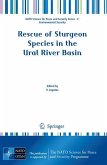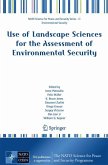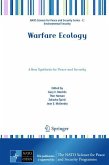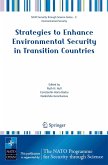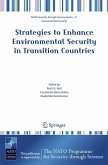The Ural river, the third longest river in Europe, is a unique ecosystem. Unlike other large European rivers the river has not been regulated and the natural hydrological regime is still intact. Thanks to that it has the only remaining spawning habitats in the entire Caspian basin for all sturgeon species. Nevertheless, this fact is not well known to the broader scientific and environmental communities.
The Ural river is also an interesting place due to its rich history of sustainable use of aquatic resources in general and sturgeons in particular. The traditional life style of the local communities, Ural Cossacks, was focused on the preservation and rational use of sturgeon species. This interesting experience of sustainable river-related management is not adequately reported in literature.
To secure further Ural sturgeon preservation the river basin ecosystem and human activities in the region must be managed in an integrated sustainable manner. The sturgeon species can be used as a natural indicator and an incentive for such transboundary IWRM cooperation taking into account all three components of sustainable development: economic, social and environmental. To secure basin IWRM and sturgeon stock restoration the International Ural Sturgeon Park should be established. The role of the Park will be to secure the natural reproduction in the Ural as the primary strategy for the sturgeon stock replenishment. The Ural River Basin Project, which aims at the creation of such a Park, was launched in 2007. This volume is devoted to the uniqueness, history and problems of the Ural river basin, its sturgeons and perspectives of their conservation.
While almost every aspect of society-nature interactions can be treated as an environmental security issue, the threats to human societies originating from inadequate freshwater management constitute one of the most wi- spread and pressing problems. For thousands of years rivers and river valleys have been the cradle of human civilizations. Rivers have provided not only food and freshwater, but also shelter and means of transportation, and they are still an essential component in every national and regional economy. In turn, growing needs of human societies, accompanied by growing abilities, have caused significant river alterations and ecosystem changes that have resulted in river contamination, biodiversity loss and general riverine ecosystem degradation. The extinction of sturgeon species is one of the most eloquent examples of the negative and irreversible influence of human society on river e- systems. The sturgeon, sometimes called the "living fossil" or living "dinosaur" of the fish world, is known to have lived since the time of the dinosaurs, for at least 250 million years, and is currently on the verge of extinction solely due to anthropogenic impacts.
The Ural river is also an interesting place due to its rich history of sustainable use of aquatic resources in general and sturgeons in particular. The traditional life style of the local communities, Ural Cossacks, was focused on the preservation and rational use of sturgeon species. This interesting experience of sustainable river-related management is not adequately reported in literature.
To secure further Ural sturgeon preservation the river basin ecosystem and human activities in the region must be managed in an integrated sustainable manner. The sturgeon species can be used as a natural indicator and an incentive for such transboundary IWRM cooperation taking into account all three components of sustainable development: economic, social and environmental. To secure basin IWRM and sturgeon stock restoration the International Ural Sturgeon Park should be established. The role of the Park will be to secure the natural reproduction in the Ural as the primary strategy for the sturgeon stock replenishment. The Ural River Basin Project, which aims at the creation of such a Park, was launched in 2007. This volume is devoted to the uniqueness, history and problems of the Ural river basin, its sturgeons and perspectives of their conservation.
While almost every aspect of society-nature interactions can be treated as an environmental security issue, the threats to human societies originating from inadequate freshwater management constitute one of the most wi- spread and pressing problems. For thousands of years rivers and river valleys have been the cradle of human civilizations. Rivers have provided not only food and freshwater, but also shelter and means of transportation, and they are still an essential component in every national and regional economy. In turn, growing needs of human societies, accompanied by growing abilities, have caused significant river alterations and ecosystem changes that have resulted in river contamination, biodiversity loss and general riverine ecosystem degradation. The extinction of sturgeon species is one of the most eloquent examples of the negative and irreversible influence of human society on river e- systems. The sturgeon, sometimes called the "living fossil" or living "dinosaur" of the fish world, is known to have lived since the time of the dinosaurs, for at least 250 million years, and is currently on the verge of extinction solely due to anthropogenic impacts.


